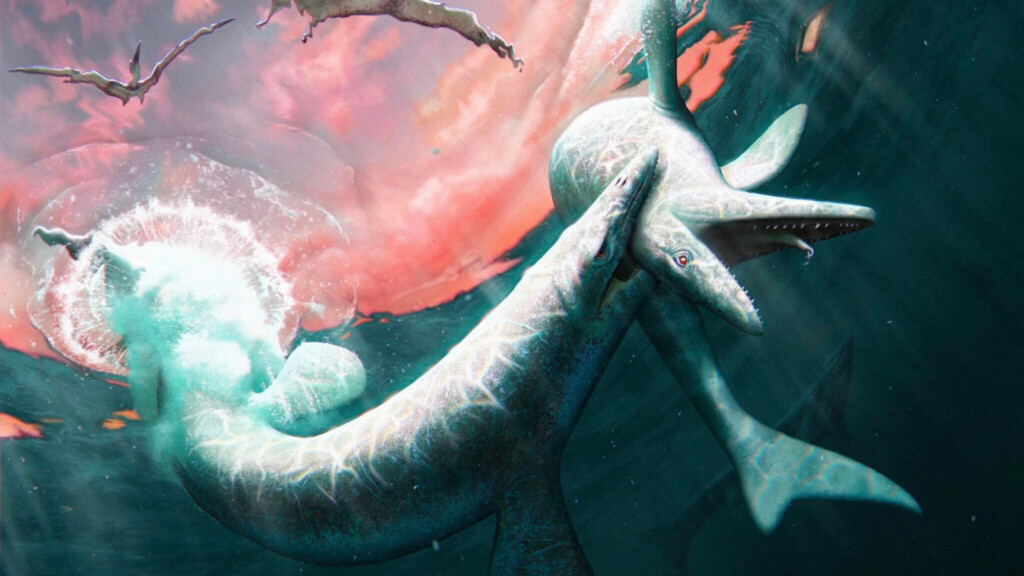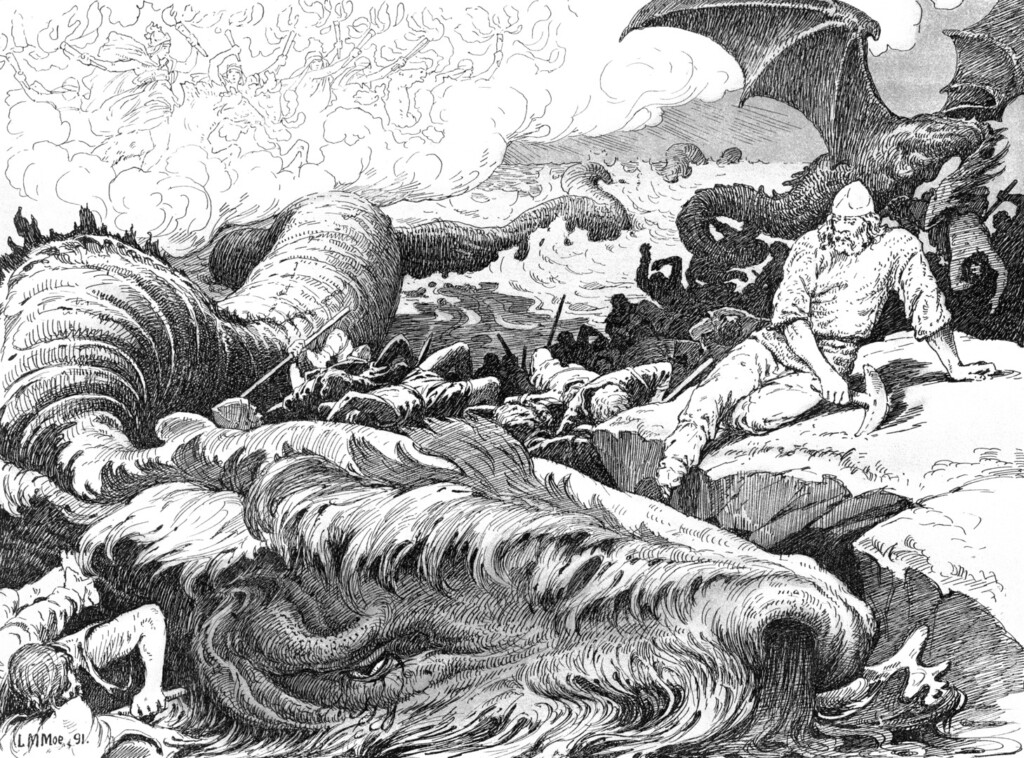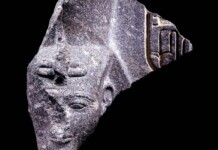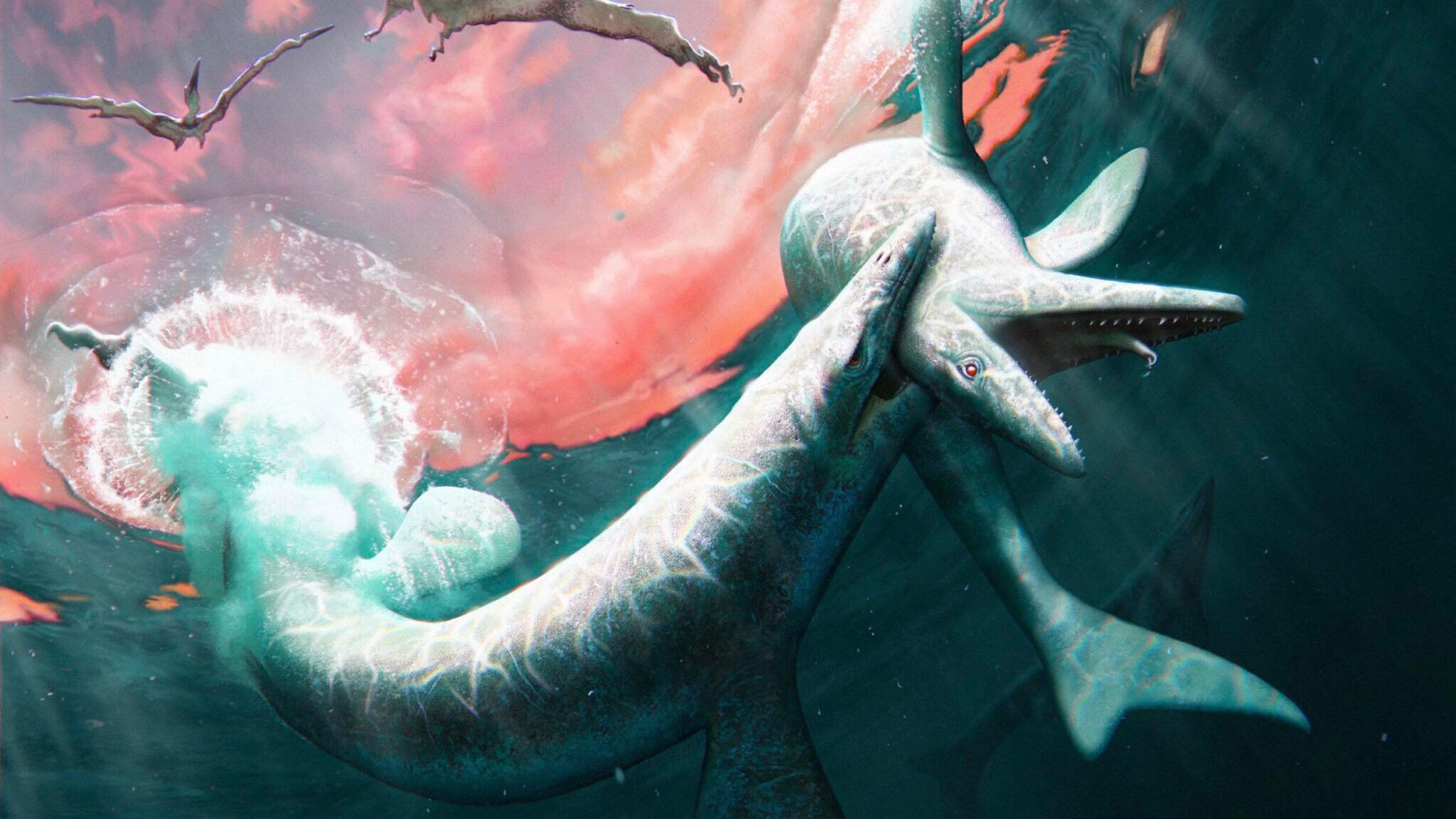
In Norse Mythology 101, there would certainly be a section on the Midgard Serpent, known as Jormungandr, which encircles the Earth and holds up the oceans by fitting its tail in its mouth.
It was in honor of that mythical beast that a new species of Mosasaur, a huge and terrifying ancient marine reptile, entered a key place in the fossil record as Jormungandr walhallaensis.
This new species has traits similar to two widely found and well-researched Mosasaurid genera, one of which, Clidastes lived in the early Cretaceous and grew to lengths between 6 and 14 feet, while the second, Mosasaurus, grew to be about 40 feet longer than that, and lived in the late Cretaceous.
Norse mythology enthusiasts will note that the species name, walhallaensis, sounds conspicuously like Valhalla, the great hall of Odin where half of all fallen warriors go to dwell. In reality, it’s named after the town in North Dakota where the fossil was discovered.
The fossil itself is an impressive specimen consisting of a nearly complete skull, jaws, and spine.

“If you put flippers on a Komodo dragon and made it really big, that’s basically what it would have looked like,” said the study’s lead author Amelia Zietlow, a Ph.D. student in comparative biology at the American Museum of Natural History.
They have been found fossilized on all 7 continents owing to their dominant position in the food chain and ocean-going lifestyle.
YOU MAY ALSO LIKE: Exquisite New Fossil Shows Scientists How Much More Ferocious Australia’s Crocs Once Were
Jormungandr walhallaensis is estimated to be about 24 feet long and, the new study suggests, lived around 80 million years ago. A set of bony ridges above its eye sockets stand out as a unique feature, and would have given it a rather permanent scowl.
“As these animals evolved into these giant sea monsters, they were constantly making changes,” Zietlow said. “This work gets us one step closer to understanding how all these different forms are related to one another.”
MORE ANIMALS LIKE THIS: One of the Largest ‘Sea Dragon’ Fossils Ever Found in Britain Unearthed As a Complete Ichthyosaur
A fair few questions about those changes remain unanswered, such as when and how many separate times they evolved flippers, when their early ancestors went from semi-aquatic to fully aquatic, and if they were more closely related to snakes or monitor lizards.
WATCH the story below from the AMNH…
SHARE This Mighty Seaborne Beast With Your Friends Who Love Dinos…




















